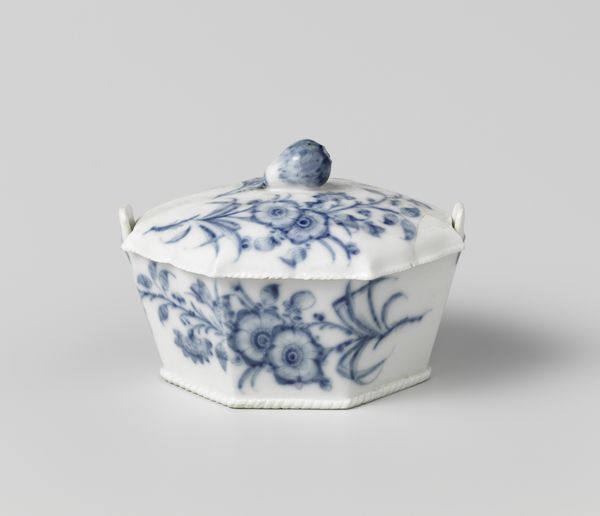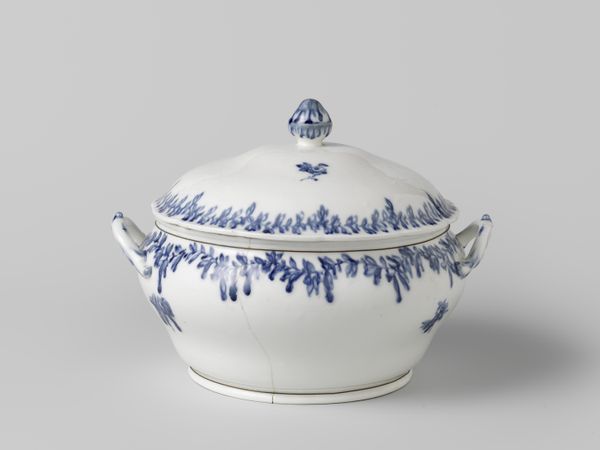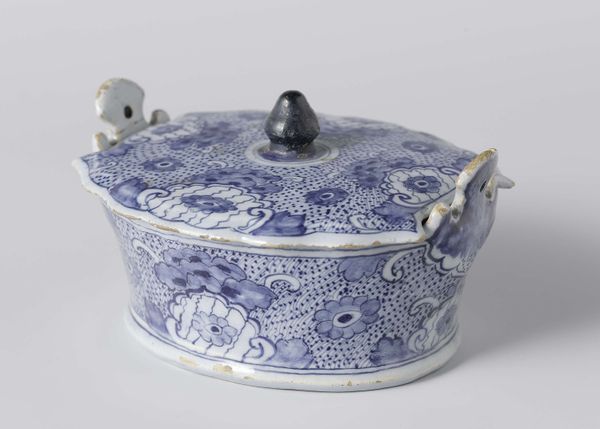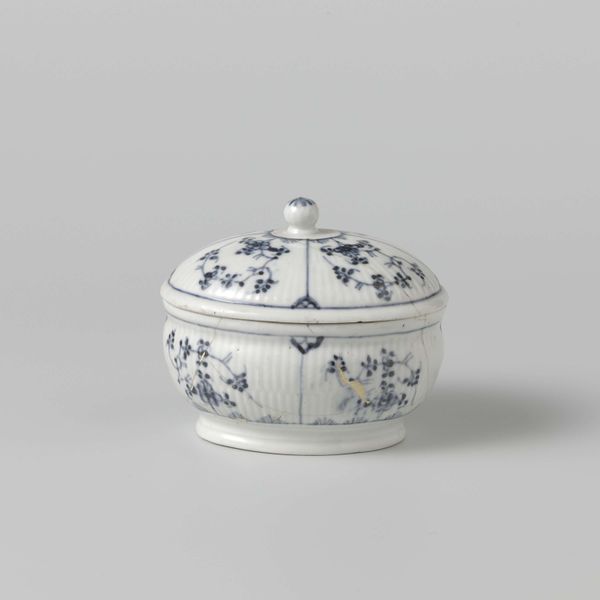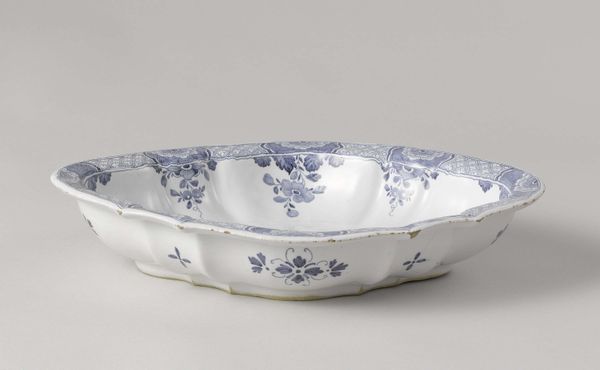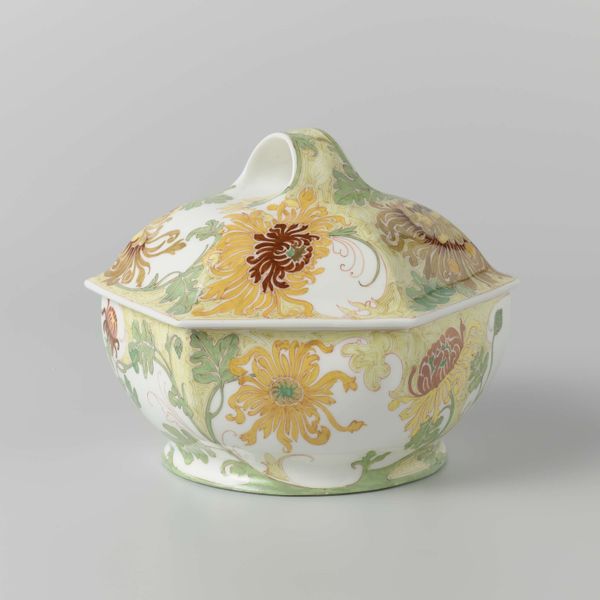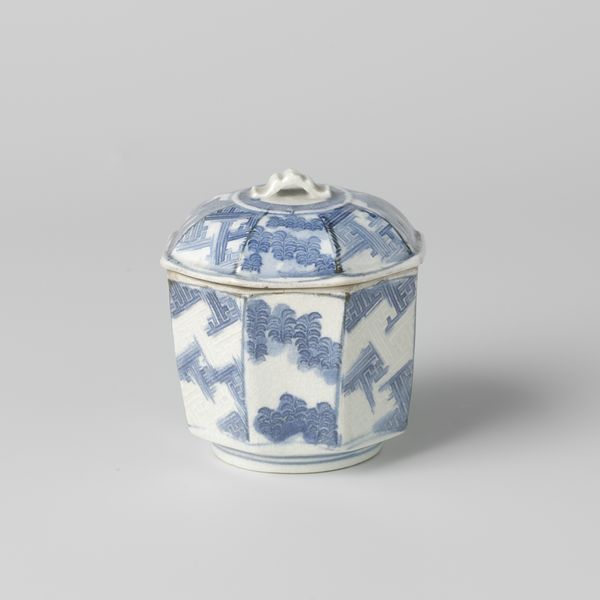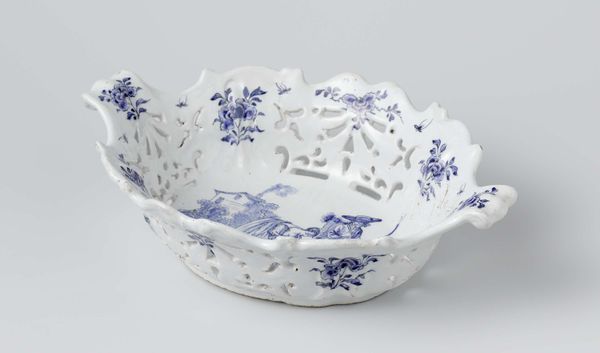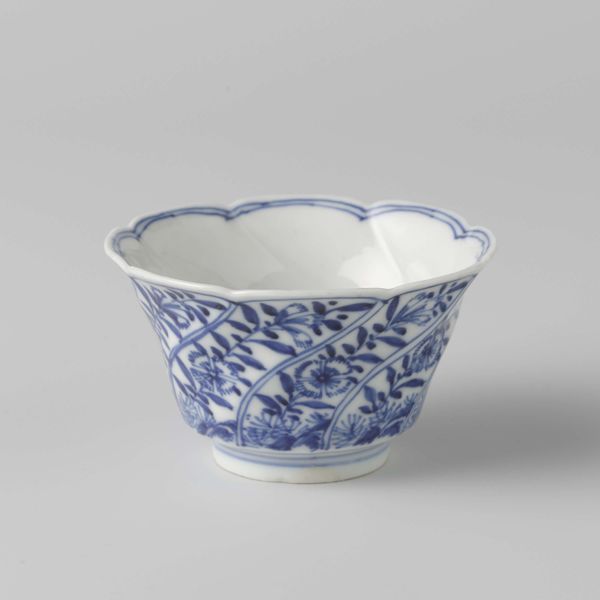
ceramic, earthenware
#
decorative element
#
asian-art
#
ceramic
#
earthenware
#
pattern repetition
#
decorative-art
Dimensions: height 2.8 cm, length 8.8 cm, width 7 cm
Copyright: Rijks Museum: Open Domain
These salt cellars feature traditional blue and white designs, a common style in ceramics. The floral motifs represent a celebration of nature, fertility, and the cyclical beauty of life, resonating with the symbolic language of blossoms found across various cultures and epochs. But what truly captures the imagination is the dragon. In Eastern art, dragons symbolize power, wisdom, and prosperity. The dragon, once a symbol of imperial authority, finds itself on a mere household object. Consider, too, the dragon's Western counterpart, often a symbol of chaos. Yet, both interpretations tap into the dragon's primal energy, evoking awe, fear, and respect. The image of the dragon has recurred through different eras and civilizations, becoming a powerful psychological symbol deeply rooted in the collective unconscious. It is a testament to the dragon's symbolic complexity – a convergence of cultural meanings and shared human experiences.
Comments
No comments
Be the first to comment and join the conversation on the ultimate creative platform.
